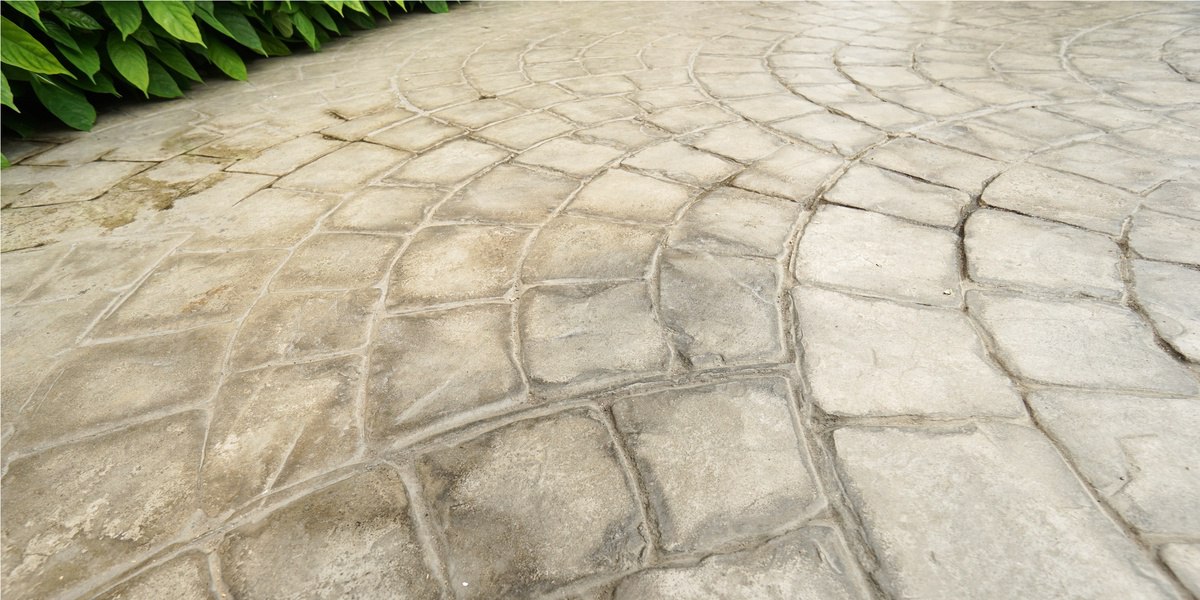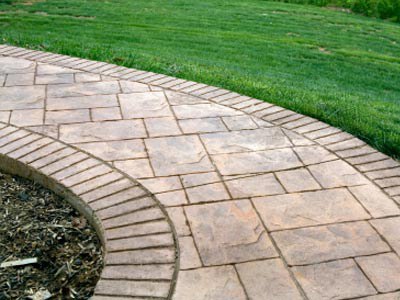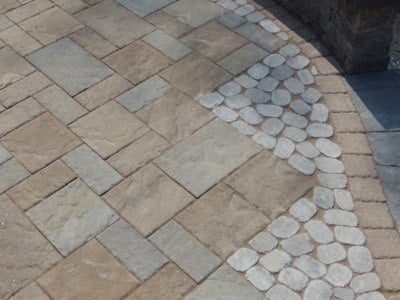
By: Jen Kloter on November 21st, 2011
A Side-By-Side Comparison of Stamped Concrete and Pavers
When making an investment in your exterior landscaping, all factors need to be taken into account. Your walkways, driveways, and patios all provide a sense of style and value to your property, and need to be considered when upgrading.
With so many options for your patios and walkways, we want to "pave the way" and explain some key differences between the most popular solutions: Pavers and Stamped Concrete.
As two attractive and affordable outdoor options, we’ll discover how they stack up against each other in terms of aesthetic appeal, safety, upkeep, and cost.
We'll let you decide which is better for your patio, pool patio or walkway.
Want to see more about the differences in costs for your landscaping or paver project? Check out our contractor comparison worksheet to see if your potential contractor offers everything you need:
Stamped Concrete
 Advantages:
Advantages:
- Because of its unique texture and variation, stamped concrete is generally more ornate and typically ranks higher on the “wow” scale, and a wide variety of patterns and colors are available.
- With so much potential for customation, stamped concrete can imitate natural stone or segmented paving.
- Concrete is very mobile, so colors can be hand blended on site in addition to the color that's added to the concrete mix.
- It can also be sealed for added protection from the elements and pool chemicals.
Disadvantages:
- The initial cost is somewhat high, not to mention the cost of repairs and ongoing maintenance can get very expensive because of New England's notoriously irregular climate.
- It can be difficult for a DIYer to install, and it may require a professional installer.
- There are some in our industry that say there are only two kinds of concrete... "Cracked and Gonna Crack," especially in Connecticut where we have a lot of freezing and thawing.
- Control joints and saw cuts are necessary to help control where the concrete cracks. They are sometimes made across the stamped pattern lines, making a mess of that ornate style you love.
- There is also the possibility for deterioration from de-icing salts.
- Repairs require patching, which can be very difficult in terms of color matching. Finding a color that matches the natural fading of the original concrete is almost impossible
- The sealer needs to be reapplied every year.
- Colors will fade over time.
Interlocking Concrete Pavers
 Advantages:
Advantages:
- Pavers are generallt thicker and more durable, so they won't crack - when installed correctly.
- Pavers cost about the same as stamped concrete - depending on the application.
- The cost efficiency over time is very low. They usually do not need to be replaced.
- Repairs are easy and seamless, and involve simply replacing broken or cracked pavers.
- Paver patterns and colors can be mixed and matched to create striking designs with accent borders and bandings.
Disadvantages:
- Joint sand needs to be "topped off" every couple of years unless a polymer sand is used. Polymer sand is a sand that has a polymeric additive in it that binds and hardens the sand grains to each other and the pavers too.
- Weeds can grow between the pavers unless a polymer sand is used. When the polymer hardens, weeds cannot grow in it.
- Dye lots can vary from pallet to pallet - so if care is not taken when installing, a large area can appear blotchy. A skilled installer will know how to blend the pavers to eliminate this issue.
- Pavers can settle and move over time if they are not installed properly. Here in Connecticut, we have to ensure that everything - the existing soil, the base material we bring in, the pavers after they're installed... - is compacted properly or the pavers will heave unevenly with the frost.
As you can see, there are pros and cons to both stamped concrete and interlocking concrete pavers. In the 26 years that Bahler Brothers has been in business, we have found that New England just isn't kind to stamped concrete. Many of our past customers that have gone the stamped concrete route have come back to us after a year or two with regrets because the concrete has cracked and is too expensive to keep repairing.
Related Articles:
How Can I Fix a Broken Pipe Under My Paver Pool Patio?
Exposed Aggregate Concrete vs. Pavers
What They Won't Tell you About Stamped Concrete
Patio Design: The Homeowners Advisor




